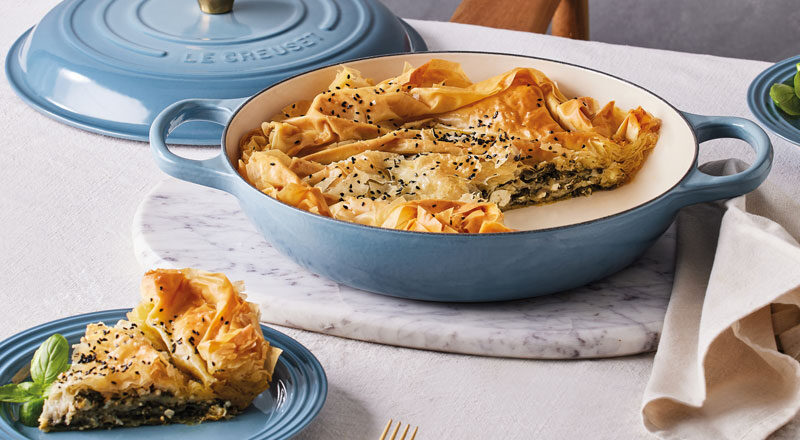When it comes to choosing the right cookware for your kitchen, there are numerous options available, each with its own unique benefits. Among the most popular choices are the cast iron braiser and copper cookware. These two types of cookware have been favored by chefs and home cooks alike for their distinct features and cooking capabilities.
In this article, we’ll explore the differences between a cast iron braiser and copper cookware, helping you make an informed decision for your kitchen. Whether you’re a professional chef or a home cook, understanding the nuances of these kitchen essentials can significantly impact your cooking experience.

Understanding the Basics
What is a Cast Iron Braiser?
A cast iron braiser is a versatile piece of cookware designed for browning, sauting, and braising. Known for its heavy-duty construction, it retains and distributes heat evenly, making it ideal for slow-cooked meals. Unlike other cookware, cast iron braisers are often enameled, providing a non-stick surface that is easy to clean. Learn more about the benefits of using a cast iron braiser for batch cooking.
What is Copper Cookware?
Copper cookware is renowned for its excellent heat conductivity. It heats up quickly and evenly, allowing for precise temperature control. Often lined with stainless steel or tin, copper cookware ensures safe cooking without the risk of copper leaching into food.
Key Differences
Heat Conductivity and Retention
Copper cookware excels in heat conductivity, providing rapid and even heating. This makes it perfect for tasks that require precise temperature adjustments. On the other hand, a cast iron braiser is superior in heat retention, which is ideal for slow-cooking and maintaining consistent temperatures.
Durability and Maintenance
While both types of cookware are durable, cast iron braisers are particularly known for their longevity. With proper care, they can last for generations. Copper cookware, while durable, requires regular polishing to maintain its appearance and needs careful handling to prevent dents and scratches.
Cooking Versatility
Both cast iron braisers and copper cookware offer versatility in cooking. Cast iron braisers are excellent for searing, braising, and even baking. In contrast, copper cookware is ideal for delicate tasks such as making sauces and sauting due to its quick response to heat changes.
Pros and Cons
Cast Iron Braiser
- Pros: Excellent heat retention, durable, versatile, non-stick when seasoned.
- Cons: Heavy, requires seasoning, takes longer to heat up.
Copper Cookware
- Pros: Superior heat conductivity, quick heating, aesthetically pleasing.
- Cons: Expensive, requires maintenance, can react with acidic foods.
Which Should You Choose?
The decision between a cast iron braiser and copper cookware ultimately depends on your cooking style and preferences. If you value heat retention and durability, a cast iron braiser is a great choice. However, if precise heat control and quick heating are your priorities, copper cookware might be the better option.
For more insights into choosing the right cookware, you can visit Serious Eats for a detailed comparison of different types of cookware.

FAQs
Can I use a cast iron braiser on all stovetops?
Yes, a cast iron braiser can be used on all stovetops, including induction, as long as it has a flat bottom.
Is copper cookware safe for everyday cooking?
Yes, copper cookware lined with stainless steel or tin is safe for everyday cooking and prevents copper from leaching into food.
How do I maintain my cast iron braiser?
To maintain a cast iron braiser, ensure it is seasoned regularly and avoid using harsh detergents. After cleaning, dry it thoroughly to prevent rust. For additional tips, visit our guide on preventing rust on cast iron.
Does copper cookware work on induction cooktops?
Copper cookware does not work on induction cooktops unless it has a magnetic base or is specifically designed for induction use.
This article contains affiliate links. We may earn a commission at no extra cost to you.

